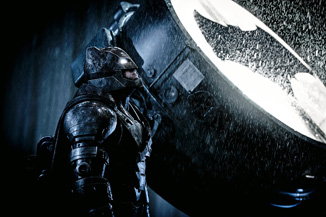|
|
Movie Review - Batman v Superman: Dawn of JusticeBy Ben GruchowMarch 29, 2016
Batman v Superman: Dawn of Justice, which is about as useless as its pitch and advertising leads us to believe (but a lot less fun to actually sit through than it is to speculate about), tosses the idea of that balancing act over its shoulder inside of the first few minutes: it not only brings in an insistent and overbearing score, it overcranks and overheats the visuals to match it. The result is depressing and insulting to the intelligence. Dawn of Justice takes place in a dim, ugly world full of misanthropes stuck in perpetual adolescence. The spore of a thematic statement about how quickly and easily we rush to judgment without the proper context is alluded to and briefly developed. Thematic conclusion is left to the winds. To call the plot overstuffed and lumpy and shapeless is to simply look at it, with no deeper analysis required. In its opening moments, the movie decisively wipes this universe clean of the prior Batman series; we are again privy to the shooting of Thomas and Martha Wayne in front of young Bruce, played by different actors with a very slightly different take on the event. We have seen this in the Tim Burton 1989 film, and in the 2005 Nolan film. It is not done better in any way here, but it certainly takes more time to tell it than it did before; director Zack Snyder employs slow motion to communicate everything from an anguished scream to a spoken word to a light walk in which nothing of any significance happens. In the previous iteration of this scene, Bruce’s father tells his son with his dying breath not to be afraid, alluding to that film’s ultimate theme of fear. Here, Bruce’s father speaks his wife’s name. This will be important later on, but there’s no need to remember it; such little confidence does the film have in its audience’s perception and smarts that it will helpfully repeat the sequence when necessary. In slow motion.
|

|
|
|

|
Thursday, October 31, 2024
© 2024 Box Office Prophets, a division of One Of Us, Inc.


